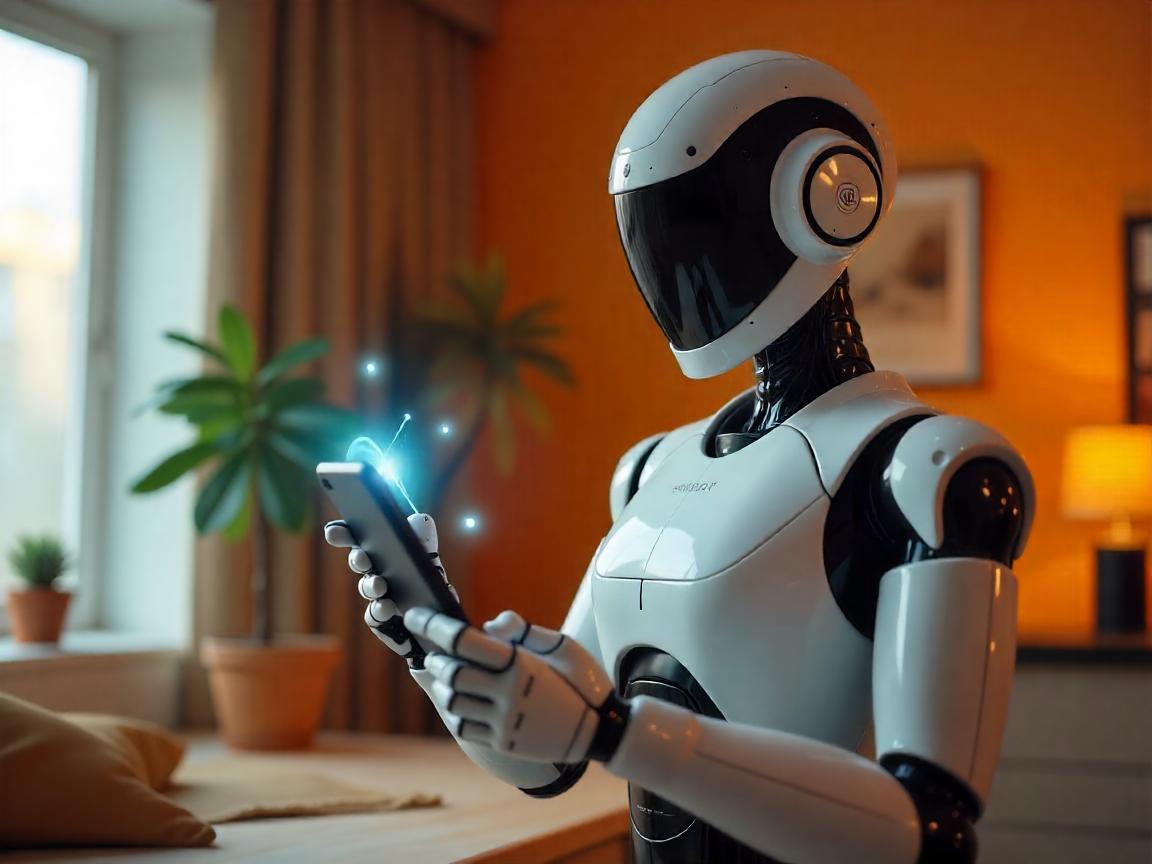
Introduction: The Next Digital Revolution?
Imagine: Air phone someday replacing your smart phone, your compact humanoid robot sitting on shoulder and with one tug he/she orders your food, checks weather, guides you through a new city, dusts off desk and does not miss any of your meetings. Sounds like utopia? Not anymore. As Tesla unveiled Optimus, Samsung released Ballie, and startup assumptions set out to grab a chunk of the emerging Artificial Intelligence market, general-purpose robots (GPRs) are creeping up into consumer reality.
The burning question then remains as follows: might it be possible to replace smartphones with these type of robots in twenty years (2030)? Roboticists, economists and futurists are getting up in arms. Others state that GPRs will obey the explosive takeoff curve that smartphones have in the 2010s. Other people claim that pocket screens are not leaving the market. Now, here are some pieces of evidence, issues and real-life experiments that are forming this possible technological revolution.
The Rise of General-Purpose Robots: Beyond Single-Task Machines
Not every robot is the same. The market today is awash with single purpose bots: Roomba vacuum cleaners, industrial arms, and delivery drones. Yet GPRs are not like that. They will be constructed in manner that they can learn, modify and do various tasks just like human beings. An example of that would be Tesla Optimus: It used to be the laughing stock of most tech ceos with its faltering demo walks, but lately it has been seen folding laundry in laboratories. Or 1X Eve, that employs the models of OpenAI to avoid training in houses and offices without being programmed to command it.
The nearest comparison? The smart phone revolution. In 2007, iPhone was touted as a luxurious gadget by naysayers. By 2015, there were 2.5 billion individuals who depended on smartphones to reach out to them daily. What about GPRs? They might do the same– should they reach these critical milestones of non-expensiveness, energy efficiency and societal trust. At present, the price of a Tesla bot is in the order of $50,000 but ARK Invest is forecasting that Tesla could bring out bots under $10,000 by 2030. That is when it becomes interesting.
Will Smarts phones actually be replaced by Robots? The Major Stumbling Blocks
Battery Life: The Robot’s Kryptonite
Your phone battery can venture through one day. Humanoid robots as they are now? 4-8 hours. Energy density will have to increase ( possibly via solid-state batteries proving the game-changer) before GPRs can compete with the convenience provided by smartphones.
Privacy: Always-On Eyes and Ears
People are already worried that Alexa could be spying on them. So picture you being followed around by a robot that has cameras, microphones and AI processing in it 24 hours a day. The privacy concerns were in part at fault when Amazon’s Astro home robot flopped. Dr. Kate Darling (MIT Media Lab): When we trust, we don t always mean that it works. It is also an implicit perception of purpose.
Cost vs. Utility: The $10,000 Tipping Point
To make GPRs a mass product, the price should be similar to that of iPhone. At this moment, they are sold at the price of luxury cars. However, history demonstrates that tech prices decline rapidly: Flat-screen television sets went down in price 20 times in 10 years, and it reached the cost of 200 dollars. At that rate, 2030 is not too far away to expect $5,000 home assistants by robotics.
The First Killer Apps for General-Purpose Robots
What is the point of buying a GPR? Busy people and aging groups of patients will take the lead in adopting. Consider:
- Elderly Care: The Toyota T-HR3 being developed by Japan is already coming to the rescue of the elderly in terms of mobility. Demand is bound to take place with 30 percent of Japan population being above 65 by the year 2030.
- Home Automation: In a world with an oven heating robot, a dog walking robot and a kid tutoring robot, all of which coordinate with your calendar: What a world it would be.
- On-Demand Labor: Retail/Logistics: Demand startup companies such as Apptronik are building GPRs. Walmart is trying out shelf-stocking robots in its Arkansas stores.
Expert Opinions: A Divided Future
- They will Merge, Not Replace- Dr. Rodney Brooks (Rethink Robotics) “Your smart phone will be the brain of your robot. The separation between devices will be erased.”
- Benedict Evans (Technology Analyst) Smartphones aren t Going Anywhere: “What people desire is something instant, portable. No robot would ever ease the usage of a pocket screen.”
Conclusion: A Hybrid Future—Or Just Hype?
Will the smart-phones be fully substituted with robots? Unlikely. However, they might swallow most of their capabilities, becoming the physical representation of online existence. What is the true wild card? Cultural acceptance. Everywhere I turn I can purchase a robot that costs 5 thousand dollars and will save me 10 hours per week. Would you get one? The solution will perhaps change the following ten years.
Final Thought: Tech revolutions are not a matter of replacement- it is a matter of reinvention. The actual question is not which one is it but how will they exist together.